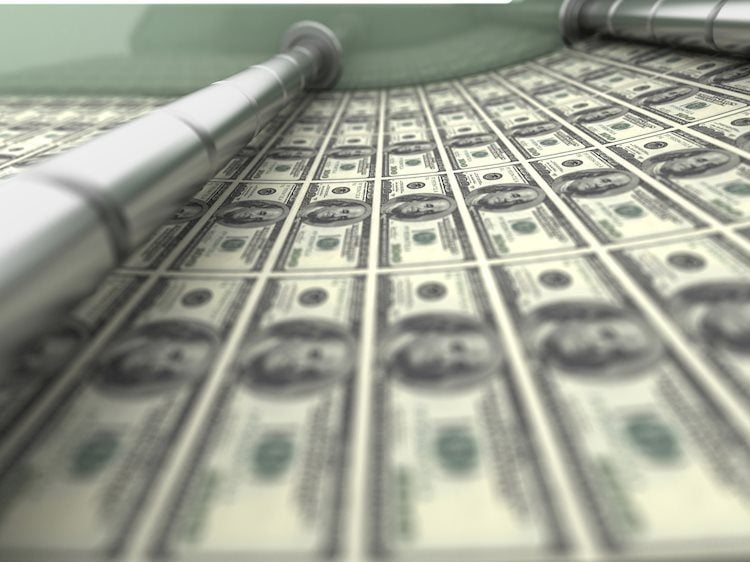- The US Dollar, measured by the DXY index, slides towards 106.10.
- US Treasury yields are increasing and may limit the USD’s losses.
- A positive market environment and Middle East fears easing weakened the USD.
- Wall St indexes are sharply rising.
- Markets have practically priced in a pause in the Fed’s meeting on Wednesday.
The US Dollar (USD) experienced a decline in Monday’s session to a low below 106.10 when gauged by the DXY Index, which measures the value of the USD against a basket of global currencies. The weakening of the USD was driven by risk-on flows, making it struggle to gather demand. As the economic calendar had nothing major to offer on Monday, investors’ focus shifts to the highlights for the rest of the week, including the Federal Reserve (Fed) Interest Rate Decision on Wednesday and Nonfarm Payrolls data on Friday. Both events have the potential to further impact the USD price dynamics.
The US economy is holding strong, helping the USD to find additional demand in the last few sessions. Despite this, the possibility of a 25 basis point hike in December, as shown by data from the CME Group FedWatch tool, continues to be low and hinders any substantial strengthening of the USD. Before at Wednesday’s meeting, a pause is primarily priced in, but investors will closely look upon Fed Chair Jerome Powell’s stance and outlook to continue placing their bets on the Fed’s next decisions.
Daily Digest Market Movers: US Dollar slides ahead of Fed decision, labor market data
- The USD DXY Index plunged towards 106.10, down by 0.40% on the day and fell to its lowest level since last Tuesday.
- The US Dollar struggles to hold the traction gained last week as buyers are taking profits.
- Investors continue assessing high-tier economic reports released last week ahead of the Fed’s decision on Wednesday.
- On Friday, the US Bureau of Economic Analysis reported that the Personal Consumption Expenditures (PCE) Price Index from September matched expectations. It came in at 3.4% YoY as expected, and aligned with its previous reading of 3.4%. The Core PCE declined to 3.7% YoY.
- On Thursday, data from the US Bureau of Economic Analysis showed that the Gross Domestic Product (GDP) preliminary estimates from Q3 exceeded expectations. The headline figure showed an annualised growth rate of 4.9%, beating the consensus of 4.2% and accelerating from the 2.1% growth seen in Q2.
- In the meantime, US Treasury yields are edging higher. The 2-year rate rose to 5.05%, while the longer-term 5 and 10-year rates advanced towards 4.83% and 4.91%, respectively. This may limit the Greenback’s losses.
- Ahead of the Fed’s decision on Wednesday, according to the CME Group FedWatch Tool, the odds of a 25 basis points hike in December are still low, around 20%.
Technical Analysis: Dollar bulls fail to defend 20-day SMA as momentum wanes
Analysing the daily chart, a neutral to bearish technical outlook is evident for the DXY Index, suggesting that the bulls are losing momentum. The Relative Strength Index (RSI) points towards a potential reversal as it weakens above its midline, while the Moving Average Convergence (MACD) histogram presents bigger red bars.
Additionally, the index failed to hold above the 20-day Simple Moving Average (SMA), and as bears step in, further downside may be on the horizon. That being said, the DXY is still above the 100-day and 200-day SMAs, indicating that on the broader picture, the bulls are still in command.
Supports: 106.00, 105.70, 105.50.
Resistances: 106.30 (20-day SMA), 107.00, 107.30.
Fed FAQs
Monetary policy in the US is shaped by the Federal Reserve (Fed). The Fed has two mandates: to achieve price stability and foster full employment. Its primary tool to achieve these goals is by adjusting interest rates.
When prices are rising too quickly and inflation is above the Fed’s 2% target, it raises interest rates, increasing borrowing costs throughout the economy. This results in a stronger US Dollar (USD) as it makes the US a more attractive place for international investors to park their money.
When inflation falls below 2% or the Unemployment Rate is too high, the Fed may lower interest rates to encourage borrowing, which weighs on the Greenback.
The Federal Reserve (Fed) holds eight policy meetings a year, where the Federal Open Market Committee (FOMC) assesses economic conditions and makes monetary policy decisions.
The FOMC is attended by twelve Fed officials – the seven members of the Board of Governors, the president of the Federal Reserve Bank of New York, and four of the remaining eleven regional Reserve Bank presidents, who serve one-year terms on a rotating basis.
In extreme situations, the Federal Reserve may resort to a policy named Quantitative Easing (QE). QE is the process by which the Fed substantially increases the flow of credit in a stuck financial system.
It is a non-standard policy measure used during crises or when inflation is extremely low. It was the Fed’s weapon of choice during the Great Financial Crisis in 2008. It involves the Fed printing more Dollars and using them to buy high grade bonds from financial institutions. QE usually weakens the US Dollar.
Quantitative tightening (QT) is the reverse process of QE, whereby the Federal Reserve stops buying bonds from financial institutions and does not reinvest the principal from the bonds it holds maturing, to purchase new bonds. It is usually positive for the value of the US Dollar.
